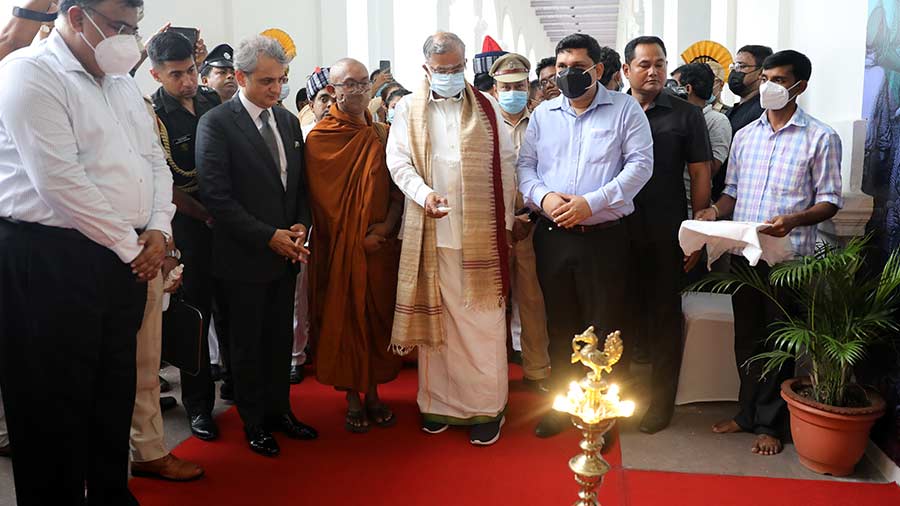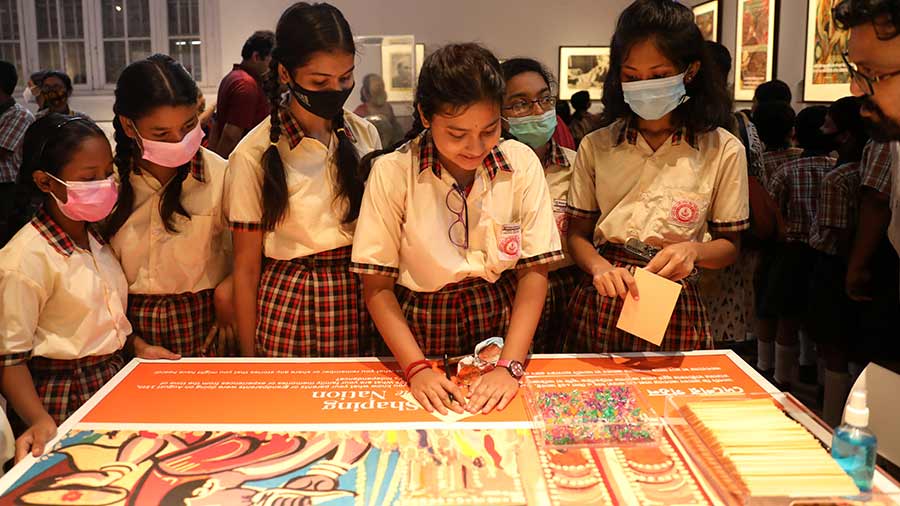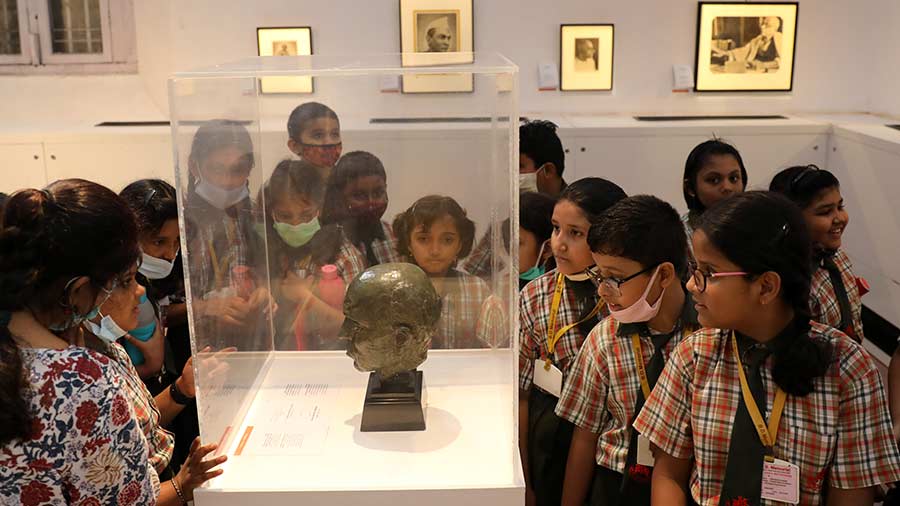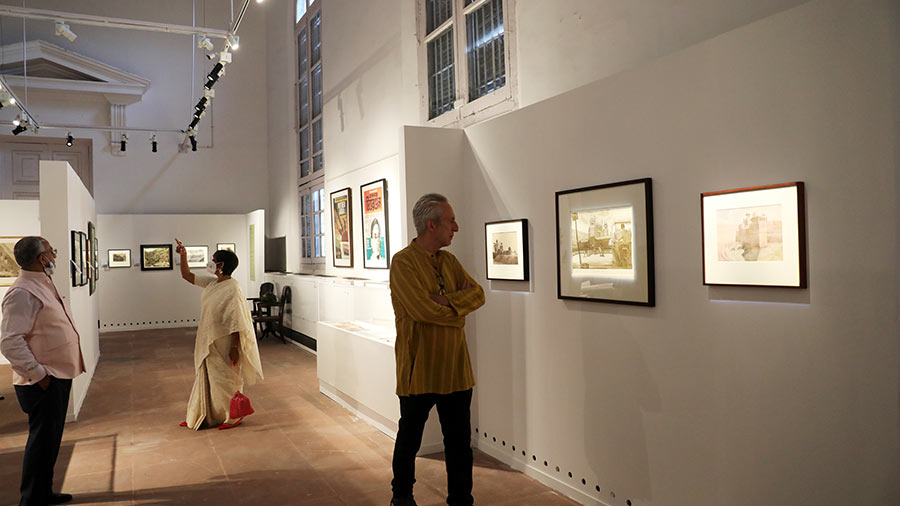There have been many ups and downs since India’s tryst with destiny began at the stroke of midnight on August 15, 1947. An ongoing exhibition at the Indian Museum traces this epic journey through paintings and historical artefacts.
Presented by the Indian Museum in partnership with the Delhi Art Gallery (DAG), the exhibition titled ‘March to Freedom: Reflections on India’s Independence’ has been curated by Mrinalini Venkateswaran, a historian working at Royal Holloway, University of London. The exhibition is on view till September 18.
The artworks and artefacts have been curated and displayed under a number of themes. While Battles of Freedom discuss various well-known battles in the history of India, The Traffic of Trade shows the position of India’s trading power on the global map. See India is all about the different perceptions of India in the eyes of travellers. Reclaiming the Past is all about telling one’s own history; Exhibit India is about showcasing culture and heritage; the different spaces and phases of the Independence struggle are portrayed in From Colonial to National. The tales of pioneers of the freedom movement have been exhibited under Shaping the Nation, while Independence talks about the fierce post-Independence struggles of India.

West Bengal governor La. Ganesan inaugurates the ‘March to Freedom’ exhibition in the presence of dignitaries, school students and visitors. Arijit Sen/ My Kolkata
The exhibition opens
West Bengal governor La. Ganesan opened the event on July 22. Indian Museum director Arijit Dutta Choudhury, education officer Sayan Bhattacharya, DAG chief executive officer and managing director Ashish Anand, DAG senior vice-president (Exhibitions) Giles Tillotson were also present.
Students from schools like BD Memorial International, Indus Valley World School, Swarnim International School came to see the exhibition on the opening day. They were accompanied by their parents or teachers.
“As part of Azaadi Ka Amrit Mahotsav, the exhibition has been organised to commemorate the 75 years of Indian Independence. Through 160 artworks and historical artefacts, it aims to reinterpret the story of the Indian freedom movement. It draws on DAG’s extensive collection of modern and early modern Indian artworks by Indian artists. It also has several iconic pieces by celebrated modern artists,” said Arijit Dutta Choudhury.

Students participate in different activities that form a core component of each section of the interactive galleries. Arijit Sen/ My Kolkata
Expressing satisfaction at the presence of schoolchildren at the event, La. Ganesan, who is also the chairman of the Board of Trustees at Indian Museum, said, ‘’I’m very happy that schoolchildren are here in large numbers. The Indian Museum plays an extremely vital role in shaping India’s cultural identity. This exhibition illuminates the well-known story of the Indian freedom movement through diverse perceptions.’’
Showcasing Indian history through interactive galleries
The exhibition showcases the works of artists and photographers ranging from renowned names like Chittaprosad and Henri Cartier-Bresson to the likes of P. T. Reddy, Kanwal Krishna and K. G. Subramanyan.
“The history of India was already being written by poets, playwrights and writers at the time of India's Independence. Their voices gave us a deep sense of rootedness, belonging and discovery. The role of artists in historic storytelling has rarely been acknowledged in public platforms, yet they remain as some of the most powerful chroniclers of the past and present,” said Ashish Anand.

Students watch a historical artefact at the exhibition, which will stay open till September 18. Arijit Sen/ My Kolkata
Each section of the exhibition has been interspersed with interactive activities like solving puzzles to sketching any of the artworks and aligning different architectural structures to create a unique building.
“I loved the activity area where I could write a message on postcards. We have studied a little about Indian Independence in school. I want to come back again with my parents and friends to view the exhibition,” said Akshay Kumar, a student of Class IV at BD Memorial International School, who came to see the exhibition with his parents.
